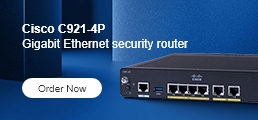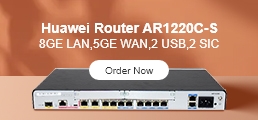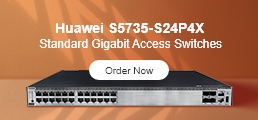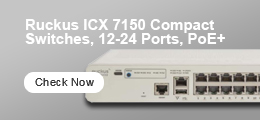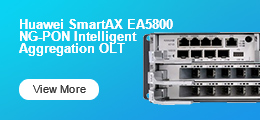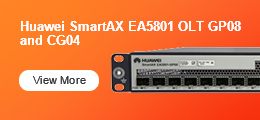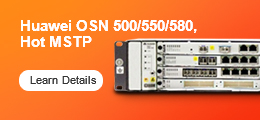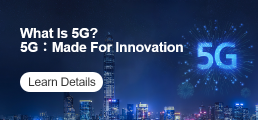5G is the 5th generation mobile network. It is a new global wireless standard after 1G, 2G, 3G, and 4G networks. 5G enables a new kind of network that is designed to connect virtually everyone and everything together including machines, objects, and devices.
5G technology offers transformative connectivity solutions with improved speeds, reduced latency, and increased capacity. Understanding terms like 5G UC, 5G UW, and 5G+ is crucial for appreciating their advanced capabilities. These innovations enhance mobile connectivity, internet services, and applications like IoT, making 5G a pivotal element in modern telecommunications.
What does 5G UC mean?
5G UC stands for 5G Ultra Capacity, a term used by some carriers to denote high-speed 5G networks with enhanced performance and broader coverage. It leverages mid-band and high-band spectrum to provide faster data speeds and lower latency compared to standard 5G networks.
What is 5G UC?
5G UC, or Ultra Capacity, is an advanced form of 5G that offers superior speed and connectivity by utilizing mid-band and high-band spectrum. This ensures better performance, reduced latency, and wider coverage, enhancing the overall user experience on 5G networks.
What is 5G?
5G is the fifth generation of mobile network technology, providing faster speeds, lower latency, and greater capacity compared to previous generations. It enables advanced applications such as IoT, smart cities, and enhanced mobile broadband, revolutionizing connectivity.
What is 5G UW?
5G UW stands for 5G Ultra Wideband, a term used to describe high-frequency 5G networks that offer ultra-fast speeds and minimal latency. Utilizing millimeter-wave spectrum, 5G UW provides exceptional performance, ideal for data-intensive applications and urban environments.
What does 5G UW mean?
5G UW, or Ultra Wideband, refers to high-frequency 5G networks that deliver superior speed and low latency. It uses millimeter-wave technology to achieve these benefits, making it suitable for high-demand areas and applications requiring significant bandwidth.
What is 5G+?
5G+ is an enhanced version of standard 5G, often utilizing higher frequency bands and advanced technologies to provide improved performance. It aims to deliver faster data speeds, lower latency, and greater reliability, enhancing the overall 5G experience.
Where is 5G icon on AT&T?
The 5G icon on AT&T devices appears in the status bar when connected to AT&T's 5G network. It indicates that the device is accessing 5G services, providing faster data speeds and improved network performance compared to 4G LTE.
What does 5G mean?
5G stands for the fifth generation of mobile network technology. It offers significant improvements in speed, latency, and capacity over previous generations, enabling new applications and services such as IoT, enhanced mobile broadband, and ultra-reliable low-latency communications.
What is 5G E?
5G E, or 5G Evolution, is a marketing term used by AT&T to describe its advanced 4G LTE network that provides faster speeds and enhanced performance. While not true 5G, it represents an interim step towards full 5G deployment.
What is 5G internet?
5G internet refers to internet connectivity provided via 5G networks. It offers significantly higher speeds and lower latency compared to 4G, enabling seamless streaming, gaming, and other data-intensive activities. 5G internet can be used for both mobile and fixed wireless access.
How much is 5G?
The cost of 5G services varies by carrier and plan. Generally, 5G plans may be priced similarly to 4G plans, but with potential premium options for higher speeds and greater data allowances. Pricing depends on the provider, region, and specific service offerings.
The development of mobile networks:
1G (14.4 Kbps ) (1970-1980): During 1G Wireless phones are used for voice only.
2G (9.6/14.4 Kbps) (1990 to 2000): 2G capabilities are achieved by allowing multiple users on a single channel via multiplexing.During 2G Cellular phones are used for data also along with voice.
2.5G (20-40 Kbps) (2001-2004): In 2.5G the internet becomes popular and data becomes more relevant. 2.5G Multimedia services and streaming starts to show growth.Phones start supporting web browsing though limited and very few phones have that.
3G (500-700 Kbps) (2004-2005): 3G has Multimedia services support along with streaming are more popular. In 3G, Universal access and portability across different device types are made possible. (Telephones, PDA's, etc.)
4G (100-300 Mbps) (Present): Speeds for 4G are further increased to keep up with data access demand used by various services.High definition streaming is now supported in 4G. New phones with HD capabilities surface. Portability is increased further. World-wide roaming is not a distant dream.
5G (Probably Gigabits) (Probably 2020):Currently there is no 5G technology deployed but under testing. Users will know it as one of the fastest, mostrobust technologies the world has ever seen.
5G wireless technology is meant to deliver higher multi-Gbps peak data speeds, ultra low latency, more reliability, massive network capacity, increased availability, and a more uniform user experience to more users. Higher performance and improved efficiency empower new user experiences and connects new industries.
Solve the concept of 5G, 5G phone will be easy to understand: A phone using 5G Internet technology is called 5G phone.
Nowadays, many manufacturers have produced 5G phones, such as Huawei, Samsung, OPPO, LG, Sony, Nokia, OnePlus and more have all made 5G. So we can buy 5G phones that suit us.
Hope it help.
Learn more:
OPPO Reno3 5G Phone vs. Vivo iQOO Neo 5G Phone
Huawei P40 5G Phone vs. Huawei Mate 30 5G Phone
Kirin 990 vs. Snapdragon 855 and 855 Plus
What will happen to 4G phones when 5G comes?




